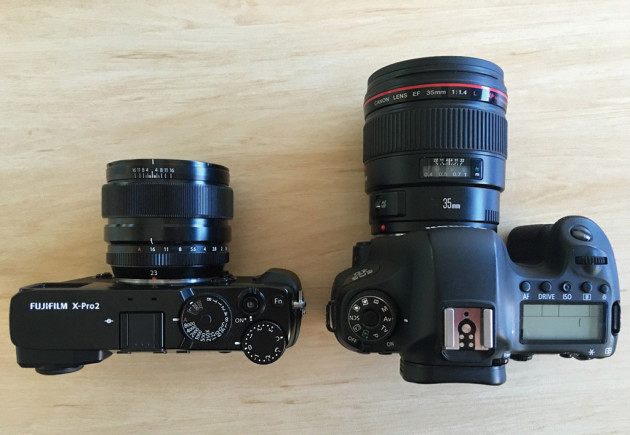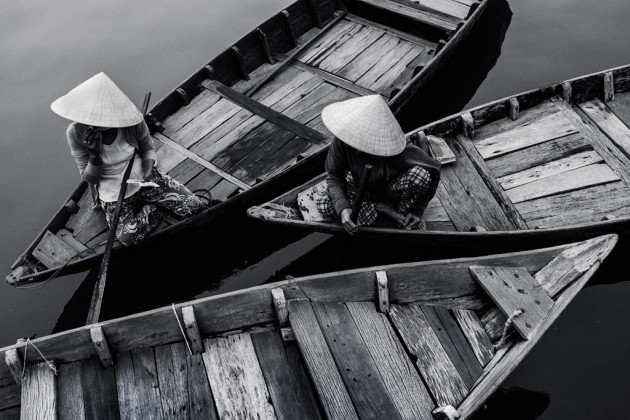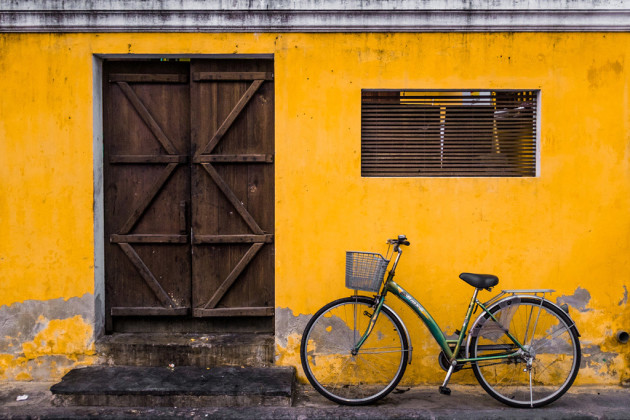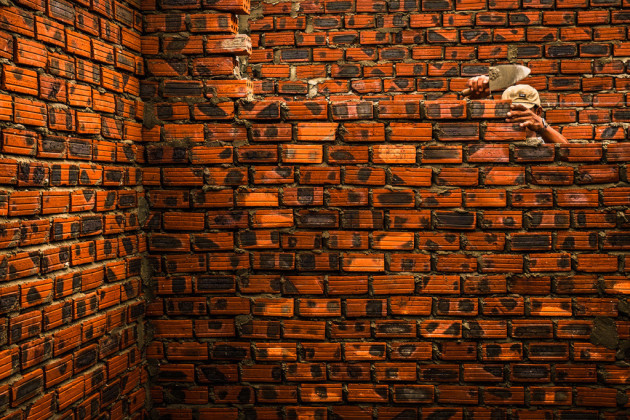Why I’m a mirrorless convert: 8 compelling reasons to trade in your DSLR
For pro photographer Drew Hopper, making the switch from his beloved DSLR to a smaller, mirrorless camera has been a revelation. He lists his eight top reasons why mirrorless cameras have changed the way he shoots.
As photographers we’re always searching for that perfect camera, but is there really such a thing? In the past decade I’ve been shooting with Canon DSLRs. They have served me well in that time, especially with landscape photography and commercial work. However, technology has advanced and small cameras are now becoming popular among professional photographers. I’ve always been a firm believer that it’s not the camera that matters; it’s the end result that counts. It’s still my view on photography, yet everyday I’m trying to push the limits of my gear to get the best possible results – I wanted to see what all the fuss was about.
I want to share some of the benefits of using smaller cameras, and mirrorless cameras in particular, and how they can change the way you shoot – potentially opening up a new world of opportunities. All the images in this article were shot with the Fujifilm X100S mirrorless rangefinder camera. It’s what I’ve predominantly used over the past eight months while travelling in Southeast Asia. It’s worth mentioning that I’m in no way affiliated with Fujifilm. I’m purely writing this based on my personal experiences using the Fujifilm system.
01 Size and weight
DSLRs and most traditional cameras are often bulkier and heavier than the more portable compact cameras on the market, making the camera act as a barrier between the photographer and their subject. Because of this it’s often a common occurrence to miss certain shots when the camera viewfinder is pressed to your eye. The bulkiness and size sometimes obscures your vision, which can be frustrating when shooting in busy and chaotic environments. It can mean missing other photo opportunities.
On the other hand, mirrorless cameras or smaller more portable cameras don’t really have this issue. The smaller build size enables you to move freely and quickly with the freedom to see what’s happening around you. The smaller body size in most cases makes these cameras lightweight, creating an easier and more enjoyable experience to carry a camera with you at all times, increasing the chance of capturing moments that may have been impossible with a DSLR.

02 Being discreet
Ever wondered how to be invisible as a photographer to capture more candid and natural photos without disrupting the scene? Although it’s not humanly possible to be invisible, there are certain methods to be discreet when shooting in public. Some photographers use telephoto lenses from a long distance to grab candid shots, however, formidable DSLR cameras are not preferred in a lot of situations due to the attention they draw.
There are times when holding the cameras viewfinder to your eye is abundantly obvious that you are shooting. When trying to capture candid and natural moments you don’t want your subjects aware that you are taking images. Smaller cameras have the benefit of being less invasive due to their compact size; therefore increasing the chances of grabbing more natural shots. People react differently to small cameras than what they do to big cameras, especially for street photography.

03 Silent shutter
With film cameras, there was only one kind of shutter: the mechanical type. These days, digital cameras you have two types of shutters; hybrid and electronic shutters, effectively replacing the old mechanical shutters.
The advantages of electronic in comparison to mechanical shutters are simple. They are more robust and reliable because there are no moving parts – this makes the shutter completely silent. It also helps eliminate the risk of blurry images at slower shutter speeds.
As a result, the electronic shutter allows faster shutter speeds. Most mechanical shutters quickest speed is 1/800th. Auto focus speed and tracking is also improved due to the autofocus sensors being placed directly in the main image sensors that are constantly exposed to light.
Many of the mirrorless cameras available today offer a silent shutter. This is a huge plus when trying to capture photos of people without being obvious you are shooting. People tend to react differently when they hear the camera clicking. The Fujifilm X100S is unique in that it has a leaf shutter and an electronic shutter. Leaf shutters are extremely quiet; basically dead silent. Often you won’t hear it even fire a shot. Leaf shutters also allow extremely fast shutter speeds with flash.

04 Electronic viewfinder (EVF)
Relatively new in digital camera technology, the electronic viewfinder (EVF) has become popular among professional photographers. Traditional DSLR cameras bounce the image up into the viewfinder by a mirror and prism. This is an optical view of what the lens is capturing and requires no electronics, just the same as looking through binoculars.
Mirrorless cameras with an EVF use the light from the lens straight into the sensor that records the data and displays a preview in the viewfinder of what the sensor captures. Think of this as live view mode through the cameras eyepiece. There are various advantages of EVFs: the ability to display the histogram in real time, which is extremely beneficial when shooting in tricky lightening situations when properly exposing. Another advantage is live display rendering. You are able see the dynamic range of highlight/shadow detail before pressing the shutter. When shooting in low light environments EVFs are much brighter, therefore the benefit of ISO can be clearly visible. Focus peeking is useful, as is the focus assist zoom. But probably my favourite feature of EVF is the option to review your images without removing your eye from the viewfinder, great when outdoors in bright environments.

05 Dedicated dials and controls
Modern cameras, in principle, tend to be complicated, jam-packed with features that most people don’t need, not even professionals. Introducing new features, dials and controls isn’t always a good thing. In my opinion, this evolution is complicating matters making it an overwhelming experience for beginners starting out in photography. People may say it’s just a matter of learning to operate whatever camera you have available, however, it’s easier to adapt to a design that’s intuitive.
Mirrorless technology seems a step ahead with intuitive cameras with only the right ingredients. Most of these cameras are far more instinctual, making it easier to adapt with their dedicated dials and controls. I like Fuji’s simple ergonomic design, which, from my experience, are some of the simplest cameras to operate straight out of the box. There’s nothing worse than buying a new camera and being overwhelmed by it’s design and features. Usability improvements such as dedicated dials for aperture, shutter speed, and ISO are important. It becomes a mess when you have to fiddle through a menu in order to adjust settings; this is the big advantage of dedicated dials in the right places.

06 Misleading value
A huge advantage of travelling with a smaller more portable camera is that it tends to look less expensive than a bigger traditional DSLR.
The general person on the street tends to assume the smaller the camera, the lower its value. I’m not saying it’s a complete deterrent, as people who steal will commit crime regardless of the camera, but smaller cameras do tend to be smaller targets.
Another advantage is people don’t really associate compact-style cameras as ‘professional’ cameras. It’s a great way to be inconspicuous while still retaining optimum image quality.

07 Accurate autofocus
Traditionally, DSLR cameras have offered faster and more accurate autofocus than mirrorless cameras but the gap is closing. For some DSLR users, the hassle of framing with the little centre square point and then re-framing to get the desired composition can lead to missed shots.
It’s safe to say DSLR autofocus right now is much faster than mirrorless, however, vast improvements have been made in recent mirrorless cameras that allow them to utilise both contrast-detect and phase-detect autofocus systems. The latest mirrorless cameras use phase-detection autofocus in live view. Phase detection autofocus systems are used to get your subjects pin sharp. Learning how to effectively use this method you can efficiently lock focus in even the most challenging lighting situations. Mirrorless may not be the quickest focusing system yet, but it is accurate when the camera locks focus, making for an enjoyable and effortless shooting experience. Plus, you never need to fine-tune autofocus on mirrorless cameras. To me, this is a huge advantage.

08 Great image quality
Both DSLR and mirrorless cameras produce high quality pictures at similar resolutions, with agreeable amounts of digital noise (grain) at higher ISOs. Earlier mirrorless camera models meant lower quality files, as they did struggle in low-light situations, but technology has advanced tenfold. Camera manufacturers have developed more sensitive chips which suppress digital noise. It is important to keep in mind, mirrorless is continuously evolving and there is still debate about image quality, but in such a short period of time mirrorless is most definitely changing the world of digital photography. ❂



